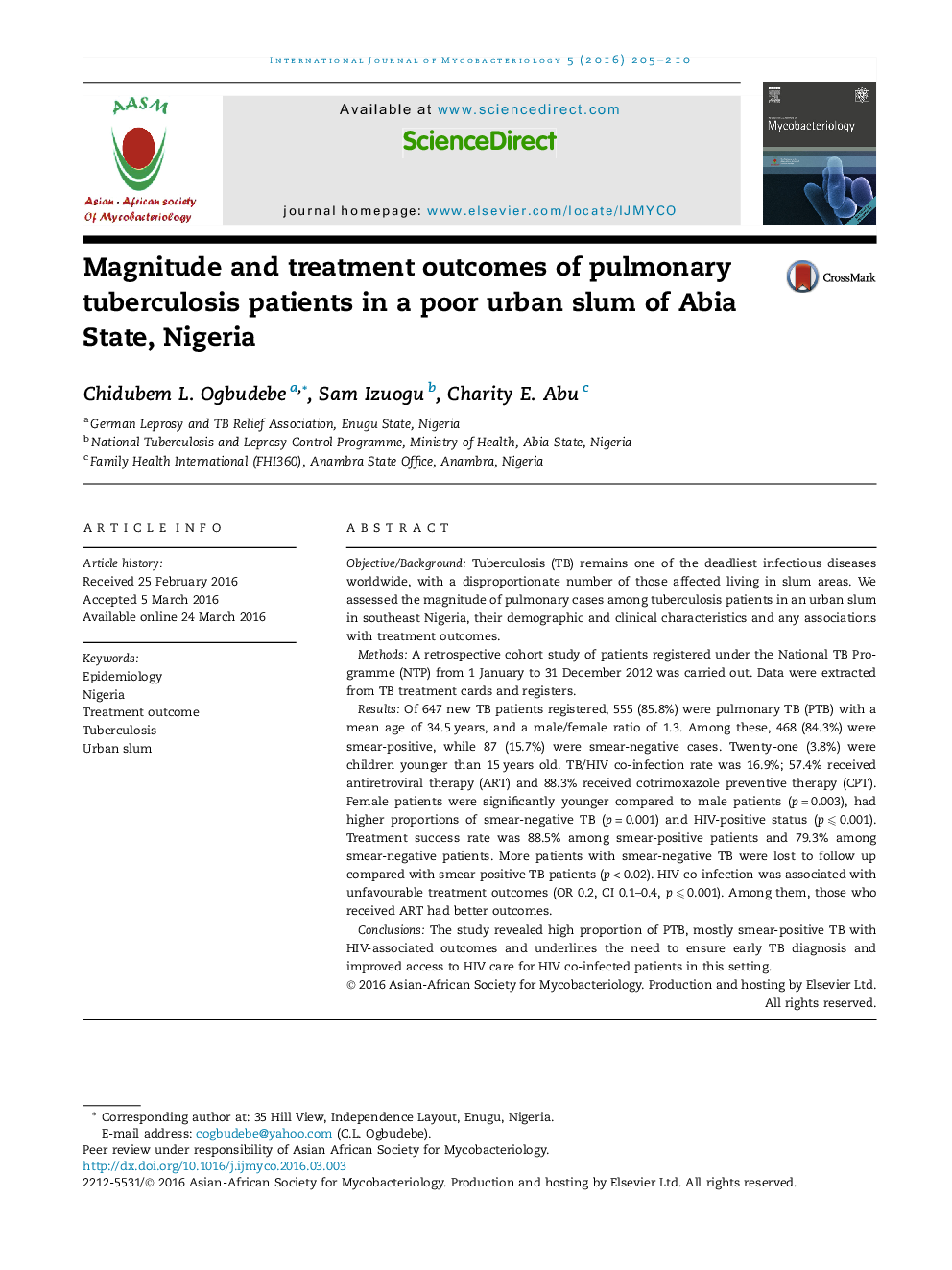| Article ID | Journal | Published Year | Pages | File Type |
|---|---|---|---|---|
| 3404937 | International Journal of Mycobacteriology | 2016 | 6 Pages |
Objective/Background: Tuberculosis (TB) remains one of the deadliest infectious diseases worldwide, with a disproportionate number of those affected living in slum areas. We assessed the magnitude of pulmonary cases among tuberculosis patients in an urban slum in southeast Nigeria, their demographic and clinical characteristics and any associations with treatment outcomes.Methods: A retrospective cohort study of patients registered under the National TB Programme (NTP) from 1 January to 31 December 2012 was carried out. Data were extracted from TB treatment cards and registers.Results: Of 647 new TB patients registered, 555 (85.8%) were pulmonary TB (PTB) with a mean age of 34.5 years, and a male/female ratio of 1.3. Among these, 468 (84.3%) were smear-positive, while 87 (15.7%) were smear-negative cases. Twenty-one (3.8%) were children younger than 15 years old. TB/HIV co-infection rate was 16.9%; 57.4% received antiretroviral therapy (ART) and 88.3% received cotrimoxazole preventive therapy (CPT). Female patients were significantly younger compared to male patients (p = 0.003), had higher proportions of smear-negative TB (p = 0.001) and HIV-positive status (p ⩽ 0.001). Treatment success rate was 88.5% among smear-positive patients and 79.3% among smear-negative patients. More patients with smear-negative TB were lost to follow up compared with smear-positive TB patients (p < 0.02). HIV co-infection was associated with unfavourable treatment outcomes (OR 0.2, CI 0.1–0.4, p ⩽ 0.001). Among them, those who received ART had better outcomes.Conclusions: The study revealed high proportion of PTB, mostly smear-positive TB with HIV-associated outcomes and underlines the need to ensure early TB diagnosis and improved access to HIV care for HIV co-infected patients in this setting.
